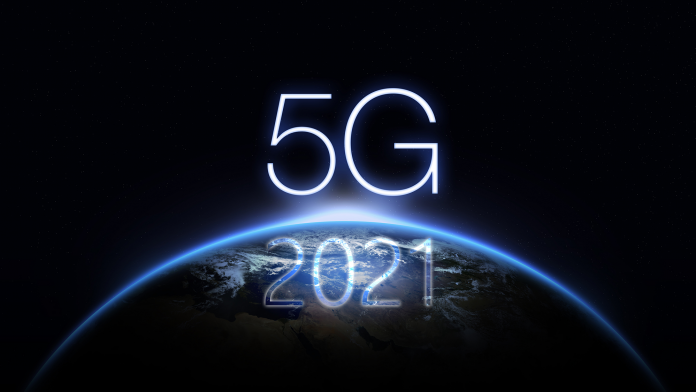The fifth-generation global wireless technology promises to deliver data rates at faster speed, low latency, and the ability to power brand-new experiences in 2021. With its superior network performance, the arrival of 5G promises to transform our daily lives. Because of this, 5G is expected to drive most of the anticipation and activity in the telecom industry this year. While numerous network operators have launched their first 5G services in 2020, there is still so much to expect from 5G from this year.
So, what are the trends and predictions for 5G in 2021?
O-RAN will gain momentum
The arrival of 5G comes with some challenges for operators. In order to deliver 5G profitably, operators need to find ways to manage the high cost areas of network evolution, growth and maintenance. Open RAN architectures give them several new avenues to accomplish a multi-vendor interoperability ecosystem, which provides them with healthier competition, innovations and lower costs for RAN equipment.
To ensure the economic success of 5G, many countries – such as the U.S Governments – have recently passed a bill to inject $750 million for supporting O-RAN deployment. This was done to encourage new market entrants and reduce the total cost of ownership, as well as enhancing competitiveness in the supply chains of Open RAN 5G Networks.
Many experts are expecting 2021 to be the year of O-RAN as telecom operators worldwide are switching towards the new architecture. This year, we might see more trials, more deployments, and more findings of challenges and opportunities that are faced with deploying Open RAN. The value of 5G will become increasingly mainstream in the next few years when Open RAN technology and the supply chain are more established and matured.
The realization of 5G mmWave
The Anticipation of 5G High Bandwidth and better performance is pushing operators to accelerate the deployment of fifth-generation mmWave services around the world. In fact, mmWave is happening in more places: Singapore and Korea have joined the U.S. and Japan to build the technology. This is in contrast to the previously held concept that mmWave would only be useful for dense urban areas or hot spots, which requires higher data demands and speed.
Major operators such as Verizon have planned to double the number of 5G mmWave sites that they have, aiming to get to 30,000 by year end. This comes at a premium charge – for instance, Samsung priced its mmWave version of the Galaxy S20 for $50 higher, while Google’s Pixel 4A fifth-generation comes at a $100 premium. While mmWave-enabled phones tend to be more expensive – mainly because they require more antenna modules and technology in the device – this does not discourage users to pick the pricier options. This could give us a glimpse into the market’s enthusiasm into 5G mmWave.
5G Will Fuel Edge Computing
Edge Computing has continued to gain popularity in recent years. However, it is this year that we will finally witness where this technology can bring real benefits. The unprecedented global pandemic that took place last year has a positive impact on workforce and operational practices, accelerating 80% of edge-driven investments and business model change across most industries over the next few years, according to IDC’s worldwide IT predictions for 2021.
The evolution of 5G and edge computing will provide a platform for enterprise, as it will speed up processing power at the network edge. Ultra-fast speeds and data transferring won’t only be available to devices, but also at the edge of the network. As a result, we will see a variety of new use cases in edge computing, making it ever more important to business strategy and operations. For instance, with mobile edge computing solutions acting as the gateway, smart glasses are a natural next step and close to becoming mainstream for frontline and field-based workers. This will allow field workers to carry out tasks hands-free, while still having access to the information and tools they need.
The race towards 5G Network Slicing
In the last few months of 2020, Nokia has announced a huge step forward to introduce the world’s first automated 4G/5G network slicing with RAN transport, and core domain. With standalone 5G cores becoming more available this year, we might be seeing the race begin for the first non-commercial trials of fifth-generation slices among some operators. The initial use cases for 5G network slicing is expected to be applied to live VR sporting events – in fact, there are fans lining up to pay a premium for this service. The profitability of live VR sporting events is yet to be determined, however it can be a powerful marketing tool for service providers and sport media companies.
Final Words
The changes that we will be seeing in 2021 will lay the groundwork for the 5G networks in the upcoming years. Although COVID-19 may create a supply chain challenge for the 5G deployment in 2020, the reality is that the pandemic has paved the way for rapid 5G acceleration in 2021. The inevitable shift in working and life needs is what drives humankind to move forward – perhaps even at a faster speed than ever before.
Since 2013, VIAVI Solutions has been an early driver in fifth-generation adoption and we continue to deliver innovative and cost-effective 5G testing tools to customers. VIAVI’s 5G test and verification solutions will deliver essential validation, verification and visibility for 5G. We can provide you with the opportunity to test, enable and assure your operations on fifth-generation and optimise moving forward with essential experts in the industry. Check out our comprehensive portfolio and learn what makes VIAVI a stand out amongst other 5G testing companies.









